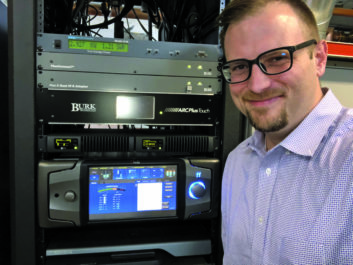 GREENSBORO, N.C. — One of the most powerful stories of music creation comes from 1981, when Phil Collins produced “In The Air Tonight.” The song was assembled during a dark time in Collins’ life, and he wasn’t afraid to show his feelings.
GREENSBORO, N.C. — One of the most powerful stories of music creation comes from 1981, when Phil Collins produced “In The Air Tonight.” The song was assembled during a dark time in Collins’ life, and he wasn’t afraid to show his feelings.
If you remember, the song’s foundation is an emotionless drum machine, and it’s layered with movements of great intensity, crescendos and decrescendos, leading up to the song’s climax and trademark drum solo. The emotions in each layered and reversed vocal, transient guitar riff, and synth is, to me, unlike any other song pressed to vinyl or compact disc.
For years however, I always thought this track sounded rough on FM radio. It seemed most stations had to dance the loudness dance and leave musicality and emotion leaning against the wall like an awkward seventh grader at his first dance.
[NAB Sneak Peak: Omnia Releases Major Processor Update]
That’s one of the toughest parts about radio in general. It can be difficult to express emotion when we’re told we have to be the loudest station on the dial — the station with the most bass, the station that doesn’t come up for air because we’re afraid someone’s going to punch over to a competitor. And, Lord, have mercy if you’re encoding for PPM.
But isn’t music the ultimate expression of emotion? Lost love, party songs, pride about your home state (I’m looking at you, Skynyrd) — the list goes on, but the common thread remains … music is all about emotion!
Enter the Omnia.11 audio processor from Cornelius Gould and his merry band of processing gurus at the Telos Alliance. With the recent release of G.Force Version 3.5 software update, coupled with its optional Perfect Declipper software, there’s no longer a tradeoff between loudness and musicality. I can push a station’s Omnia.11 as hard as the market will tolerate, while at the same time allowing the processor to open up those transient details that come standard with “In The Air Tonight.”
A MATTER OF FEEL
Modern songs that have been mastered for smartphone consumption (translation: clipped to death) are given a breath of fresh air that’s akin to early compact disc technology with incredible dynamic range, but at the same time maintaining the competitive punch, with loudness that doesn’t generate that ridiculous intermod distortion that traditional processing tends to generate. Sure, the .11 has been out for a number of years now — but I’m more than confident installing this processor in some of the most competitive stations in America.
Yes, the Omnia.11 can make your station loud — it’s great at helping your station jump off the dial and makes you as competitive as you want. As a program director, however, the real under-the-hood elements don’t matter as much as the results.
How does the listener feel when they hear the radio station? Are we taking them somewhere? Can they feel the despair in Phil’s heart when the first few beats of the drum machine arrive? Can they really feel the intensity of his pain when the infamous drum break finally kicks in? Are listeners hearing the subtle crackle and pops of a smoldering fire in Cam’s “Burning House?” How do your listeners feel when the beat drops in Maren Morris’ “The Middle?”
What makes the .11 my favorite tool in the processing arsenal is its unparalleled ability to handle both loudness and emotion. To me, it’s akin to seeing HDTV for the first time. You’ll hear songs that you’ve played countless times on the air come out of your speakers with an added dimension. I don’t know how they do it, but it sure is cool.
The fact of the matter for me is that songs are like bookmarks in the chapters of our lives and we deserve the chance to treat them like it. The Omnia.11 audio processor from the Telos Alliance gives us a chance to turn our radio stations away from being hype machines to being what we truly were designed to become — emotional companions for our fantastic listeners.
For information, contact Cam Eicher at The Telos Alliance in Ohio at 1-216-241-7225 or visit www.telosalliance.com.







